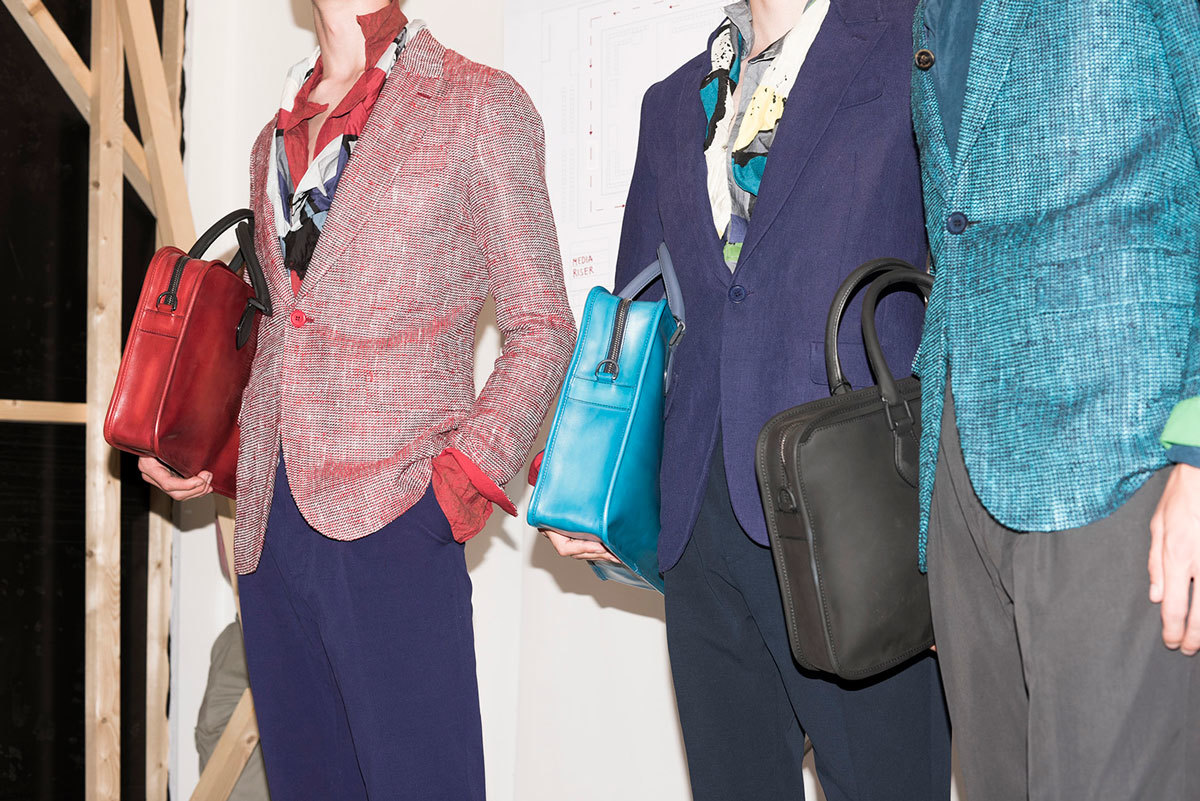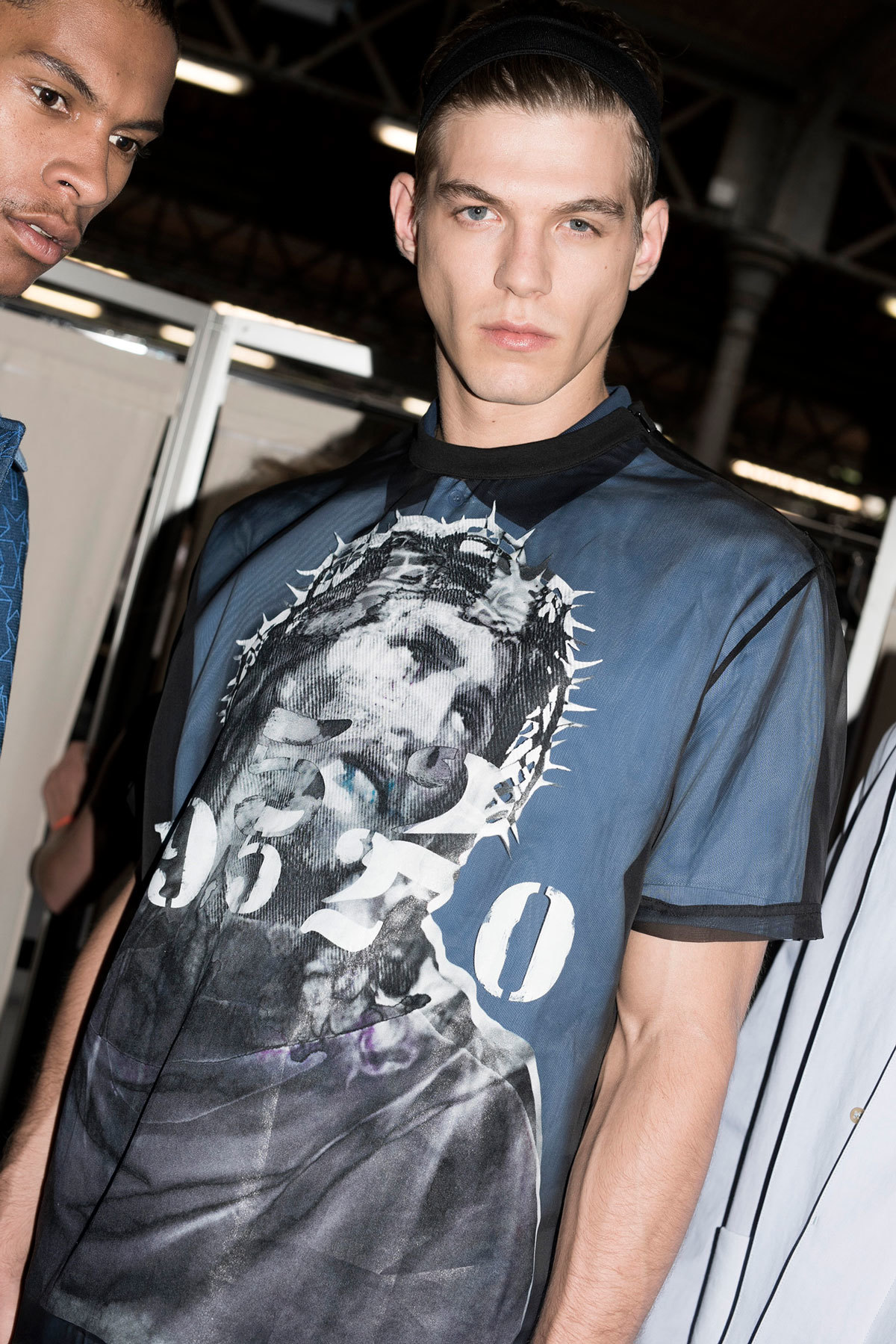It might be weird to talk about freedom in a fashion day and age that sees Berluti welcome guests to its show with a courtyard full of men in underwear, reading newspapers in deckchairs. (Yes, that happened.) But the men’s shows and their surrounding industry are such a liberated and isolated world, you easily forget the menswear stigmas, which affect the common man and his freedom to dress in whatever way he wants out in the real world. For most men, tailoring is the daily reality when it comes to expressing themselves through their wardrobe. It’s almost kind of communist when you think about it, this two or three-piece uniform worn consistently around the world by men, who want or have to look formal. Because when it comes to the men’s wardrobe, formal is intrinsically connected to the suit. It literally is your only option: a tailored prison of expression.

It was perhaps with this notion as her point of departure that Rei Kawakubo set out to deconstruct that uniform at COMME des GARÇONS Homme Plus. Within the first handful of exits – a series of sliced up, somewhat Edwardian tailoring looks covered in 19th century fox hunting motifs – she’d already gone straight for the beating heart of master tailoring: heritage, the deeper into the British countryside the better. And it was hardly a coincidence that her models’ flame-like hairpieces looked like crowns—when, of course, they weren’t replaced by gigantic Renaissance berets. This was the regal high fortress of menswear: the male prison of tailoring, ripped apart and celebrated all at once, in an illustration of the modern man’s imprisonment in the suit and the weird Stockholm Syndrome that comes with it, which we all suffer from.


Kawakubo’s collection was far from anti-tailoring, however. Rather, it dealt with the great values of it, and how easy these values are to manipulate. And as the collection got into its white tie segment – no ties, tattered shorts – the confinement of the traditional men’s wardrobe seemed less claustrophobic. There was a sense of freedom about it echoed (loudly) at Givenchy where Riccardo Tisci put himself in the mindset of an American prisoner. “I’ve been watching films and documentaries on all these kids in America – Latino – whose only lives are the hope of freedom and release, which gets deeper and deeper, and the love of their life, who is a woman, usually, in a pin-up dream,” he told i-D after the show. “So I wanted to put all these elements together, and do a collection inspired by the classic American costume – or uniform – of jails, and at the same time this over-strong obsession with Jesus.”

And so, the Lord Savior made a comeback at Givenchy, thorn-pierced in black and white prints on t-shirts and skirts sliced open down the sides. There were huge cellblock keys worn as necklaces, Stars and Stripes denim trousers, and Naomi Campbell in one of those pin-up dream outfits Tisci was talking about, like something out of Chicago. It wasn’t glamorizing life on the inside, but rather fetishizing the image of prisons portrayed in the media: tall, dark, handsome inmates, muscles on display, hoochie girlfriends on conjugal visits, and the irresistible, sexy danger of it all—when observed from afar. “All this together, and the blue and lightness, it was a very romantic collection, I think, even if the starting point was very dark,” Tisci concluded. His message of the importance of freedom went way beyond fashion, but served as a reminder of the privilege of self-expression through clothes, something the average man of today’s free world could embrace to a much higher degree.
Credits
Text Anders Christian Madsen
Backstage photography Jason Lloyd Evans
Catwalk photography Mitchell Sams
